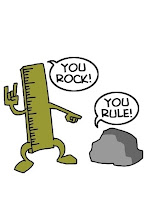Updated
Air France has joined Airbus in being probed for alleged manslaughter in connection with the 2009 crash of a Rio de Janeiro to Paris flight with the loss of 228 lives.
Investigating magistrate Sylvie Zimmerman placed Air France boss Pierre-Henri Gourjon under judicial investigation for alleged manslaughter in the crash the day after doing the same to Airbus, Air France lawyers said on Friday.The crash has been partly blamed on malfunctioning speed sensors used by Airbus, with Air France accused of not responding quickly enough to reports that they might be faulty.
The announcement came ahead of the resumption of a search for the plane's wreckage in the Atlantic using a German mini-submarine.
So far only 3 per cent of the plane and around 50 bodies have been found from the wreckage.
Airbus has said it is mystified by the move, while victims' associations have welcomed it.
"We are very satisfied with this decision because Airbus will be more careful with this aircraft," Nelson Marinho, the head of an association representing families of the victims, said in Rio de Janeiro on Thursday.
"We also know that the maintenance of the planes was defective," he said.
No charges have yet been brought in the case, which had been suspended until the plane's black box flight recorders was found.
A third search of the ocean floor to try to locate the black boxes ended in failure last May.
Despite disagreeing with the probe, Airbus has said it will cooperate pending retrieval of the doomed flight's black boxes.
Flight 447 from Rio to Paris went down roughly midway between Brazil and Senegal on June 1, 2009, in the deadliest crash in Air France's history.
The crash claimed the lives of all 228 people on board, of more than 30 nationalities. Most of those killed were French, Brazilian and German.
Air France in December was ordered to pay $727,000 to relatives of a Brazilian family that died in the accident.
The airline, through its insurers, had made compensation payments to the relatives of the passengers and crew, but continues to defend itself from litigation in Brazil.





















































